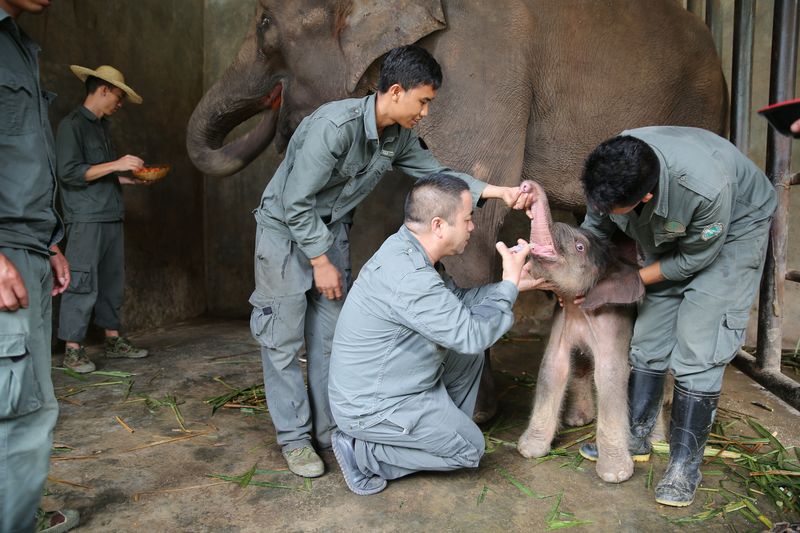
Doctors feed Ranran's calf at the Asian Elephant Breeding and Rescue Center in Xishuangbanna in southwest China's Yunnan province. (Photo from Asian Elephant Breeding and Rescue Center)
The Asian Elephant Breeding and Rescue Center gave Ranran a second chance at life 14 years ago when they rescued the elephant calf. Now, all grown up, Ranran has given birth to her first calf.
By Xinhua Writers Chu Yi and Zhang Dongqiang
KUNMING, Oct. 4 (Xinhua) -- After 14 years of caring, Ranran has mostly recovered, growing up from 155 cm, 500 kg to 230 cm, 2,200 kg, with a scar about the size of a small bowl on her left rear leg.
On Sept. 21, the 17-year-old Asian elephant became a mother for the first time and delivered a healthy calf after a 22-month pregnancy.
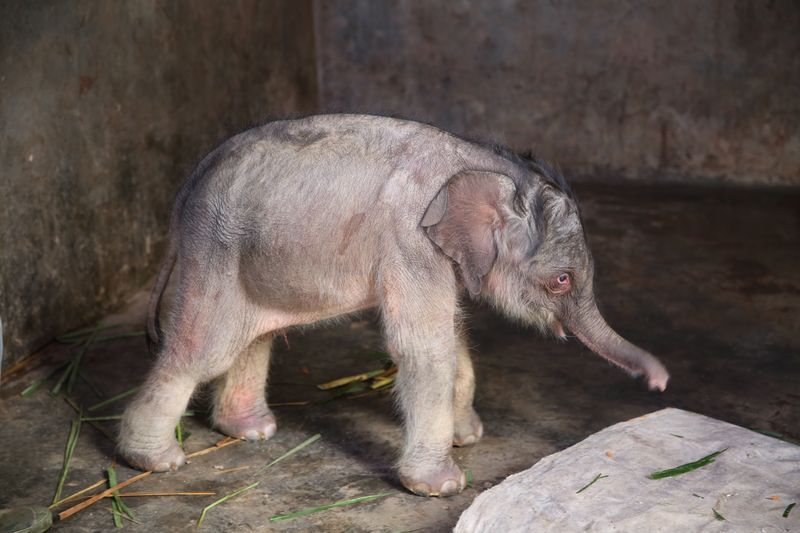
Ranran's calf (Photo from Asian Elephant Breeding and Rescue Center)
According to the Asian Elephant Breeding and Rescue Center in Xishuangbanna in southwest China's Yunnan province, Ranran mated with a male elephant picked by caregivers. The couple were left alone in a quiet and comfortable forest for about two weeks before Ranran was successfully conceived on Dec. 21 2017.
The new mom only had a three-minute labor before giving birth to a 68.2 kg female calf of 83 cm tall.
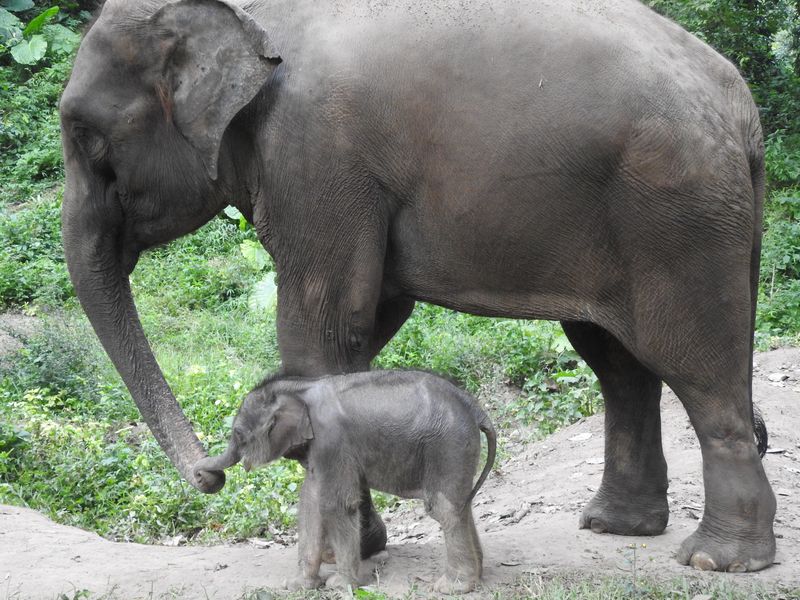
Mother Ranran and her calf (Photo from Asian Elephant Breeding and Rescue Center)
It is the seventh calf born at the center and the third captive-bred one with the help of "manual intervention."
In 2005, when elephant doctor Bao Weiming first met Ranran, the three-year-old was dying. Her left rear leg was caught by a steel trap, leaving a circular wound of more than 20 cm wide and 6 cm deep, which had become highly infected.
Flies and maggots flew around the frail elephant that appeared to be nothing more than a walking skeleton. But the herd was reluctant to leave, surrounding the hurt elephant, touching her with their trunks and supporting her when she stumbled.
Forest rangers in Xishuangbanna found the baby elephant. More than 80 rescuers, including forest and wildlife protection authorities, elephant doctors and experts, rushed to the scene.
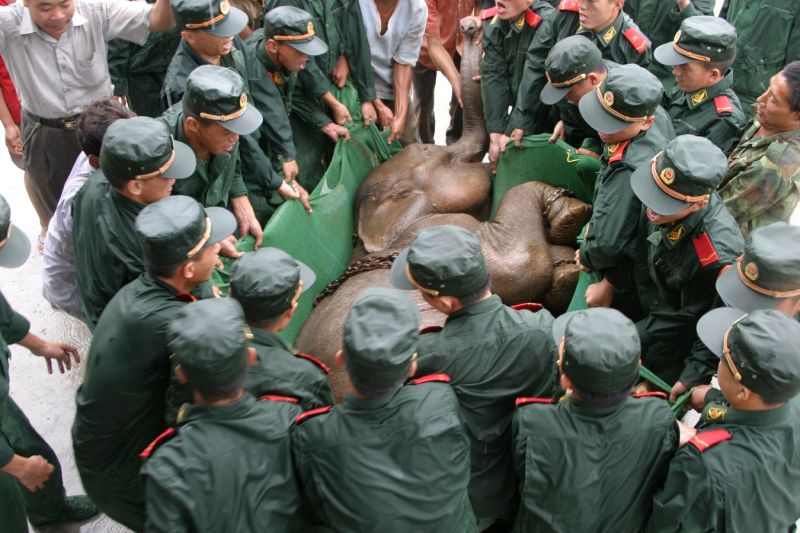
File photo of Ranran being rescued in 2005 (Photo from Asian Elephant Breeding and Rescue Center)
"Ranran was in the rainforest. We had to cut the branches and vines to get close to her. Leeches, snakes and wild elephants were among the many things that stood in our way," Bao said.
Once through the rainforest, separating the wounded elephant from the herd remained another challenge. "Ranran was severely injured. Time was precious. But the elephants were so connected to each other that the herd members refused to leave."
Throwing stones, firing a handgun, and yelling, the rescuers tried their best to take the baby away without hurting the other elephants. When they finally succeeded, the rescuers wasted no time cleaning the wound and escorting her to a local rescue station where Ranran was carefully looked after.
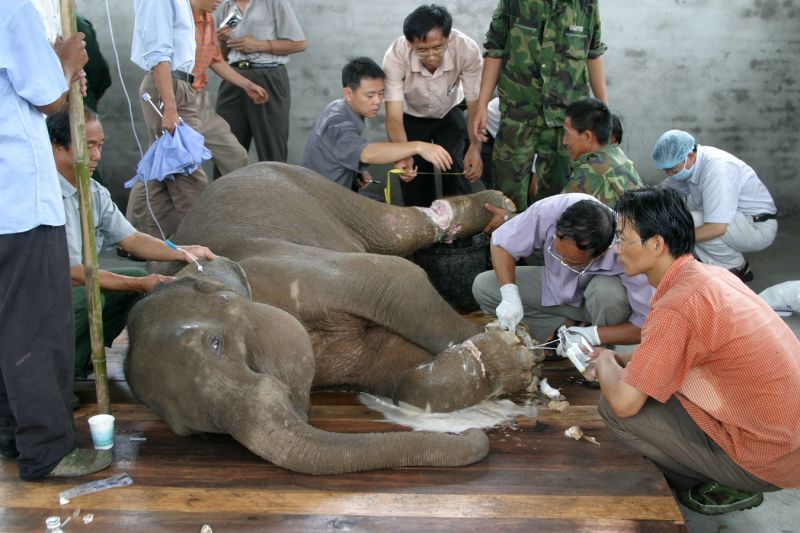
File photo of Ranran being rescued in 2005 (Photo from Asian Elephant Breeding and Rescue Center)
Three years later, the center was established in Xishuangbanna National Nature Reserve, a 241,776-hectare rainforest, to research the captive breeding of wild elephants, rescue, and house those in need, as well as maintain the number of the rare species.
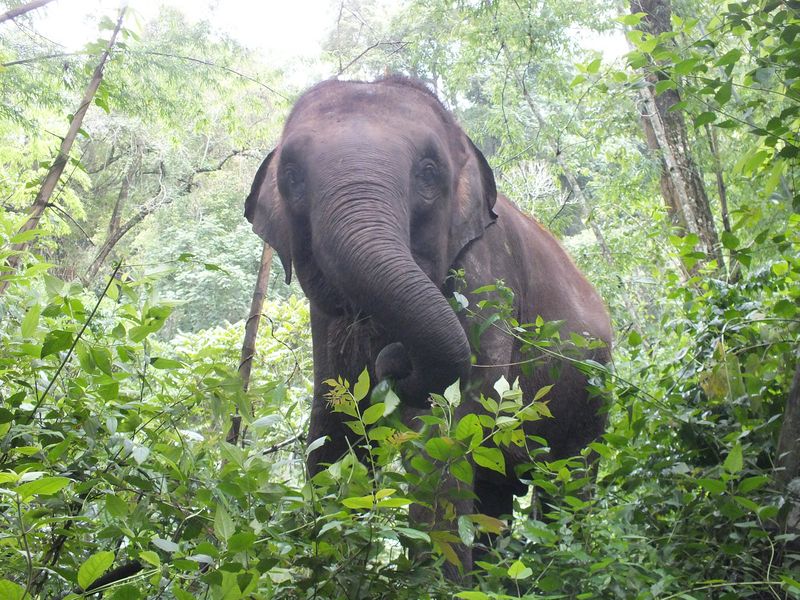
File photo of Ranran in 2013 (Photo from Asian Elephant Breeding and Rescue Center)
Ranran was the first lucky girl that was treated at the center.
Since 2008, the center has rescued more than 20 wild Asian elephants, 11 of whom are still accepting medical care and rehabilitation training at the sanctuary.
The elephant group, often called king of the land, is the largest land animal on earth, though the Asian ones are slightly smaller than their African cousins.
The animals are under Class-A protection in China and are included on the International Union for Conservation of Nature (IUCN) Red List of Threatened Species with African elephants listed as "Vulnerable" and Asian elephants "Endangered".
"Enhanced protection for wild animals and captive elephant breeding measures have led to a rise in the elephant population in recent years," Bao said. "In the 1980s, only about 170 wild Asian elephants were living in Yunnan."
"Through captive breeding, the mating intervals can be effectively shortened, which will increase the reproduction rate of female elephants and the number of the giant," Bao said.
It is estimated that the population in Yunnan has risen to around 300.
"Ranran is shy and timid and suffered serious leg injuries when rescued, so we had to make enough preparations for her conception," Bao said.
In August, when Ranran was due to give birth, the center installed cameras to monitor her behaviors. Since September, staff at the center found an increasing hormonal readiness of Ranran and arranged experienced caregivers to take care of the mother.
On the birthday, mahouts prepared soft quilts and grasses in advance. "The giant gave birth at a certain height from the ground and we had to make sure the calf would not be hurt. We also put the baby on a specially-made mattress, helping the animal feed from her mother."
According to Bao, captive breeding can provide researchers with more knowledge on the reproduction and nurturing behaviors of the anima. With the help of the experienced caregivers, the survival rate of the newborn calves could also be enhanced.
"It can also help avoid genetic degradation and pave ways for developing artificial insemination in the future," Bao said. ■



